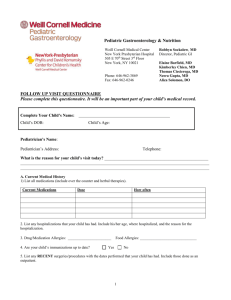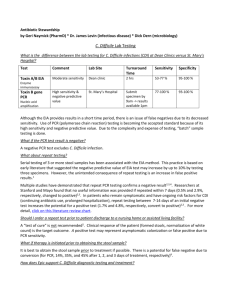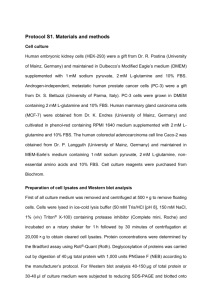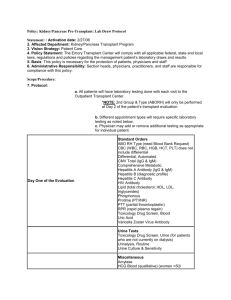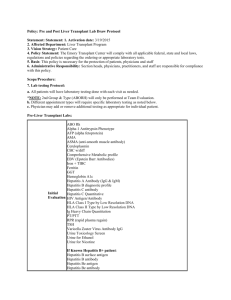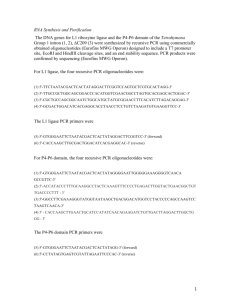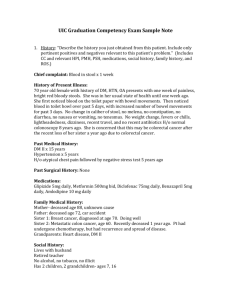file - BioMed Central
advertisement
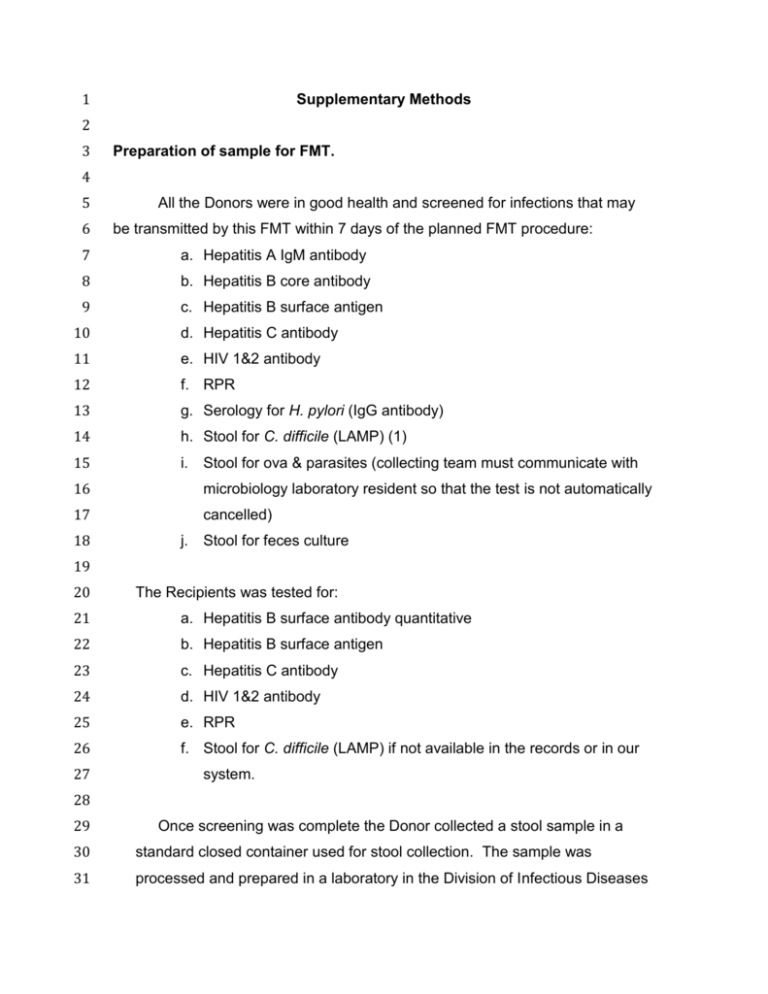
1 Supplementary Methods 2 3 Preparation of sample for FMT. 4 5 6 All the Donors were in good health and screened for infections that may be transmitted by this FMT within 7 days of the planned FMT procedure: 7 a. Hepatitis A IgM antibody 8 b. Hepatitis B core antibody 9 c. Hepatitis B surface antigen 10 d. Hepatitis C antibody 11 e. HIV 1&2 antibody 12 f. RPR 13 g. Serology for H. pylori (IgG antibody) 14 h. Stool for C. difficile (LAMP) (1) 15 i. Stool for ova & parasites (collecting team must communicate with 16 microbiology laboratory resident so that the test is not automatically 17 cancelled) 18 j. Stool for feces culture 19 20 The Recipients was tested for: 21 a. Hepatitis B surface antibody quantitative 22 b. Hepatitis B surface antigen 23 c. Hepatitis C antibody 24 d. HIV 1&2 antibody 25 e. RPR 26 f. Stool for C. difficile (LAMP) if not available in the records or in our 27 system. 28 29 Once screening was complete the Donor collected a stool sample in a 30 standard closed container used for stool collection. The sample was 31 processed and prepared in a laboratory in the Division of Infectious Diseases 32 33 34 as previously described (2). Recommendations for volumes to be used depending on route of administration: 35 36 37 Table 1 Donor Upper gastrointestinal Lower gastrointestinal tract tract 25-30 g 25-30 g 50-100 cc 200-500 cc stool volume Volume of dilution in saline 38 39 The stool sample was homogenized stool with sterile non-bacteriostatic 40 saline or water in the blender (see Table 1 for volume). Initially use the low 41 setting until the sample breaks up, and then advance the speed gradually to the 42 highest setting and was continued for 2 – 4 minutes until sample was smooth. 43 The suspension was filtered using a 90mm Perforated filter plate sample 44 collected in sterile container with capacity of 100-500 cc depending on the 45 planned route of administration (Table 1). 46 The procedures were performed by physicians with experience in placing 47 nasogastric tubes, nasoduodenal tubes, nasojejunal tubes, administering 48 enemas, or performing colonoscopies (in case of GI co-investigators). In those 49 who need an NG or ND tube an X ray will be obtained prior to the transplant to 50 make sure the tube is well positioned. After the procedure the patients were 51 asked to follow up in clinic or continue to be seen in the hospital if they are 52 inpatients. 53 54 PCR for V4 region of 16S rDNA. 55 56 The oligonucleotide primers used for the PCR amplification of the V4 57 region of the 16S rRNA gene were as follows (Eurofind Genomics, Inc., 58 Huntsville, AL): 59 60 Forward V4: 61 5’AATGATACGGCGACCACCGAGATCTACACTATGGTAATTGTGTGCCAGCM 62 GCCGCGGTAA 3’; and 63 64 Reverse V4: 65 5’CAAGAGAAGACGGCATACGAGATNNNNNNAGTCAGTCAGCCGGACTAC 66 HVGGGTWTCTAAT3’. 67 68 69 For PCR reactions, the conditions were as follows: 70 71 10 µL of 5X Reaction Buffer; 1.5 µL (200 uM) of each of the dNTPs; 2 µL 72 (1.5 uM) of each of the primers; 1.5 µL (5 U) of the “LongAmp” enzyme kit (New 73 England Biolabs, Ipswich, MA; cat # E5200S); 30 µL 2-5 ng/ul of the Template 74 DNA prepared using the “Fecal DNA Isolation kit with the concentration of DNA; 75 3µL of H2O to a total reaction volume of 50 µL. The PCR cycling parameters 76 were initial denature 94o C 1 min; 32 cycles of amplification in which each cycle 77 consisting of 94oC 30 secs, 50oC 1 min, 65oC 1 min; followed by final extension 78 of 65oC 3 min; then final hold at 4o C. Following PCR, the entire PCR reaction 79 was electrophoresed on a 1.0% (w/v) agarose/Tris-borate-EDTA agarose gel. 80 The PCR product (approximately 380 bp predicted product size) was visualized 81 by UV illumination. The DNA band was excised with a sterile scalpel and purified 82 from the agarose using QIAquick Gel Extraction Kit according to manufacturer’s 83 instructions. (Qiagen; cat # 28704). The samples were quantitated using Pico 84 Green and adjusted to a concentration of 4 nM (3). 85 86 References 87 1. Boyanton, B.L., Jr., et al., Loop-mediated isothermal amplification compared to real- 88 time PCR and enzyme immunoassay for toxigenic Clostridium difficile detection. J Clin 89 Microbiol, 2012. 50(3): p. 640-5 90 91 2. Landy, J. H. O. Al-Hassi , S. D. McLaughlinà, A. W. Walker, P. J. Ciclitira, R. J. 92 Nicholls*, S. K. Clark and A. L. Hart. 2011. Review article: faecal transplantation 93 therapy for gastrointestinal disease. Aliment Pharmacol Ther; 34: 409–415. 94 95 3. Kumar, R., P. Eipers, R.B. Little, M. Crowley, D.K. Crossman, E.J. Lefkowitz 96 and C.D. Morrow. 2014. Getting Started with Microbiome Analysis: Sample 97 Acquisition to Bioinformatics. Current Protocols in Human Genetics. Curr. Protoc. 98 Hum. Genet. 82:18.8:18.8.1–18.8.29 (PMID 25042718). 99 100
